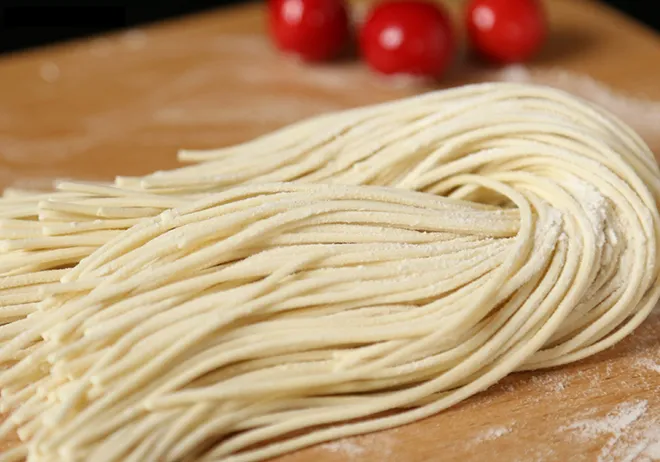korean buckwheat cold noodles
Exploring the Delight of Korean Buckwheat Cold Noodles
Korean cuisine is renowned for its bold flavors and vibrant dishes, but one culinary gem that often captures the hearts (and palates) of food enthusiasts worldwide is *naengmyeon*, or cold buckwheat noodles. Specifically enjoyed during the hot summer months, this dish is not only refreshing but also embodies the essence of Korean culinary traditions.
The Essence of Naengmyeon
At its core, naengmyeon consists of thin, chewy noodles made primarily from buckwheat flour, though some variations may include sweet potato or arrowroot starch. The dish is distinguished by its cold serving temperature, which is achieved by soaking the noodles in ice water, making it a perfect choice for combating the sweltering summer heat in Korea.
Naengmyeon is more than just a dish; it is a cultural experience steeped in tradition. The origins of this dish date back to the Joseon Dynasty when it was believed to be brought over by the people of the northern regions of Korea. The noodles were easy to prepare, made from readily available ingredients, and could be enjoyed cold, which was particularly advantageous during the hot summer months.
The Components of a Perfect Bowl
A classic bowl of naengmyeon is an artful assembly of various ingredients. The foundation, of course, is the cold buckwheat noodles. They are typically topped with sliced cucumbers, Korean pear, boiled eggs, and often accompanied by slices of beef or pork. To enhance the flavor profile, a spicy mustard sauce or vinegary dipping sauce is served on the side, allowing diners to customize the taste to their preference.
One particularly popular version of naengmyeon is *mul naengmyeon*, which translates to “water cold noodles”. This variety features the noodles served in a chilled beef broth, often garnished with slices of beef and vegetables. It’s refreshing and has a slightly tangy flavor, making each bite a delight.
On the other hand, *bibim naengmyeon* is a spicier variation. Instead of broth, the noodles are dressed with a spicy sauce made from gochujang (Korean chili paste), sesame oil, and vinegar, creating a vibrant and fiery dish for those who enjoy a kick in their meals.
korean buckwheat cold noodles

Health Benefits
The rise of health-conscious dining has elevated the status of buckwheat noodles. Buckwheat is a highly nutritious grain that is gluten-free, making it suitable for individuals with gluten sensitivities. It’s rich in fiber, protein, and essential vitamins and minerals, promoting heart health and aiding digestion. The cold noodles, combined with fresh vegetables and proteins, create a balanced meal that is not only delicious but also nourishing.
Preparing Naengmyeon at Home
For those inspired to recreate this dish at home, preparing naengmyeon is an engaging culinary adventure. First, you’ll need to procure buckwheat noodles and prepare the broth or sauce based on your preference for mul or bibim naengmyeon. Fresh vegetables should be sliced thinly, while eggs can be boiled to perfection for that desirable, creamy yolk.
The assembly is where creativity blossoms. Give your naengmyeon a gourmet touch by arranging the toppings artfully and drizzling the sauce over the noodles before mixing delicately. You can even get imaginative with additional toppings like seaweed strips or pickled vegetables to enhance both flavor and presentation.
A Cultural Staple
Naengmyeon has transcended its humble beginnings to become a beloved staple of Korean cuisine, enjoyed locally and internationally. Whether at a bustling street stall, a traditional restaurant, or your own kitchen, savoring this dish offers not just a sense of refreshment during the hot months but also a taste of Korea's rich cultural heritage.
In a world where flavors continuously converge and evolve, buckwheat cold noodles stand as a testament to the beauty of simple ingredients fashioned into something extraordinary. As you relish each bite, remember that with every noodle slurp, you’re partaking in a tradition that has been enjoyed for centuries—a truly delicious way to connect with a vibrant culture.
-
Unleash Your Inner Chef with Delectable Italian Pasta CreationsNewsAug.01,2025
-
Savor Health and Flavor: Irresistible Soba Noodles for Sale Await!NewsAug.01,2025
-
Nourish Your Body with Premium Organic Ramen - A Culinary Delight AwaitsNewsAug.01,2025
-
Elevate Your Dishes with Our Exquisite Kinds of Egg NoodlesNewsAug.01,2025
-
Dive into Flavorful Convenience with Our Ramen OfferingsNewsAug.01,2025
-
Discover Exquisite Types of Naengmyeon and Chilled Soba NoodlesNewsAug.01,2025
-
Is Whole Wheat Pasta Healthy?NewsMay.30,2025
Browse qua the following product new the we

















































































































